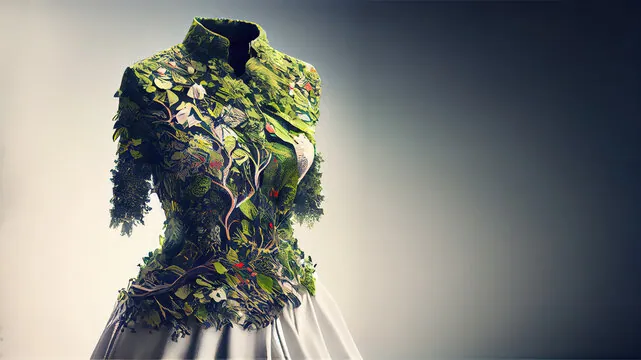Introduction
As the fashion industry continues to evolve, one of the most significant shifts has been towards sustainability. Increasingly aware of the environmental and ethical implications of their choices, consumers are seeking eco-friendly alternatives to traditional fashion. Sustainable fashion encompasses a wide range of practices, from using eco-conscious materials to promoting fair labor practices. This article delves into the concept of sustainable fashion, its importance, trends, and how consumers can embrace eco-friendly style choices.
The Importance of Sustainable Fashion
1. Environmental Impact of Fast Fashion
The fast fashion industry has garnered criticism for its negative impact on the environment. The production and disposal of clothing contribute significantly to pollution, waste, and the depletion of natural resources. For instance:
- Water Consumption: The fashion industry is one of the largest consumers of freshwater. The production of cotton alone requires vast amounts of water, often leading to water scarcity in some regions.
- Waste Generation: The average consumer discards around 70 pounds of clothing each year, contributing to overflowing landfills. Many of these garments are made from synthetic fibers that take hundreds of years to decompose.
- Carbon Footprint: The production and transportation of fast fashion contribute to greenhouse gas emissions, exacerbating climate change.
2. Ethical Considerations
Beyond environmental concerns, sustainable fashion also addresses ethical issues within the industry. Many fast fashion brands rely on exploitative labor practices, including low wages, poor working conditions, and lack of rights for workers in developing countries. Sustainable fashion promotes:
- Fair Labor Practices: Brands that prioritize sustainability often ensure fair wages and safe working conditions for their employees.
- Transparency: Ethical fashion brands provide transparency about their supply chains, allowing consumers to make informed choices about where and how their clothing is produced.
Key Trends in Sustainable Fashion
1. Eco-Friendly Materials
A significant trend in sustainable fashion is the use of eco-friendly materials. Designers and brands are increasingly turning to sustainable alternatives to traditional fabrics. Some popular materials include:
- Organic Cotton: Grown without synthetic pesticides or fertilizers, organic cotton is a more sustainable choice that benefits both the environment and farmers.
- Bamboo: This rapidly renewable resource requires little water and no pesticides, making it an eco-friendly fabric choice.
- Recycled Fabrics: Brands are incorporating materials made from recycled plastics and textiles, reducing waste and minimizing the need for new resources.
- Tencel: Made from sustainably sourced wood pulp, Tencel is biodegradable and produced in a closed-loop system that minimizes environmental impact.
2. Circular Fashion
Circular fashion emphasizes reducing waste and extending the lifecycle of garments. This trend includes:
- Upcycling: Designers are creatively reusing materials from old clothing to create new pieces, minimizing waste and promoting originality.
- Rental and Subscription Services: Fashion rental services allow consumers to enjoy a rotating wardrobe without the need to purchase new clothing. This model encourages sharing and reduces the demand for fast fashion.
- Second-Hand Shopping: Thrift stores and online resale platforms are gaining popularity as consumers seek unique pieces while contributing to a circular economy.
How Consumers Can Embrace Sustainable Fashion
1. Mindful Purchasing
Consumers play a vital role in promoting sustainable fashion through mindful purchasing decisions. Consider the following tips:
- Research Brands: Look for brands that prioritize sustainability, transparency, and ethical practices. Many organizations and websites provide ratings and information about fashion brands’ sustainability efforts.
- Invest in Quality: Instead of buying numerous fast fashion items, focus on quality pieces that will last longer. Investing in well-made clothing reduces the need for frequent replacements.
- Prioritize Versatility: Choose versatile pieces that can be styled in multiple ways, maximizing your wardrobe’s functionality.
2. Care for Your Clothing
Proper care for clothing can extend its lifespan and reduce the frequency of replacements:
- Wash Less Often: Many garments do not need to be washed after every wear. Washing less not only conserves water but also reduces wear and tear.
- Air Dry: Whenever possible, air dry your clothing to prevent damage from heat and save energy.
- Repair Rather Than Replace: Learn basic sewing skills to mend minor damages instead of discarding clothing. Many brands also offer repair services to extend the life of their products.
The Future of Sustainable Fashion
As awareness of environmental and ethical issues continues to grow, sustainable fashion is poised to become the norm rather than the exception. The industry is witnessing increased collaboration among designers, brands, and consumers to drive meaningful change. Future trends may include:
- Innovative Materials: Research and development in sustainable textiles will likely yield new materials with minimal environmental impact.
- Blockchain Technology: Blockchain may be used to enhance transparency in the supply chain, allowing consumers to track the origin and journey of their clothing.
- Policy Changes: Governments and organizations are beginning to implement policies aimed at reducing waste in the fashion industry and promoting sustainable practices.
Conclusion
Sustainable fashion represents a critical shift towards eco-friendly style choices that prioritize environmental and ethical considerations. As consumers become more conscious of their purchasing decisions, the demand for sustainable alternatives continues to grow. By embracing eco-friendly materials, supporting ethical brands, and practicing mindful consumption, individuals can contribute to a more sustainable future for the fashion industry. Together, we can reshape the way we view and engage with fashion, ensuring that style choices benefit not only ourselves but also the planet.






